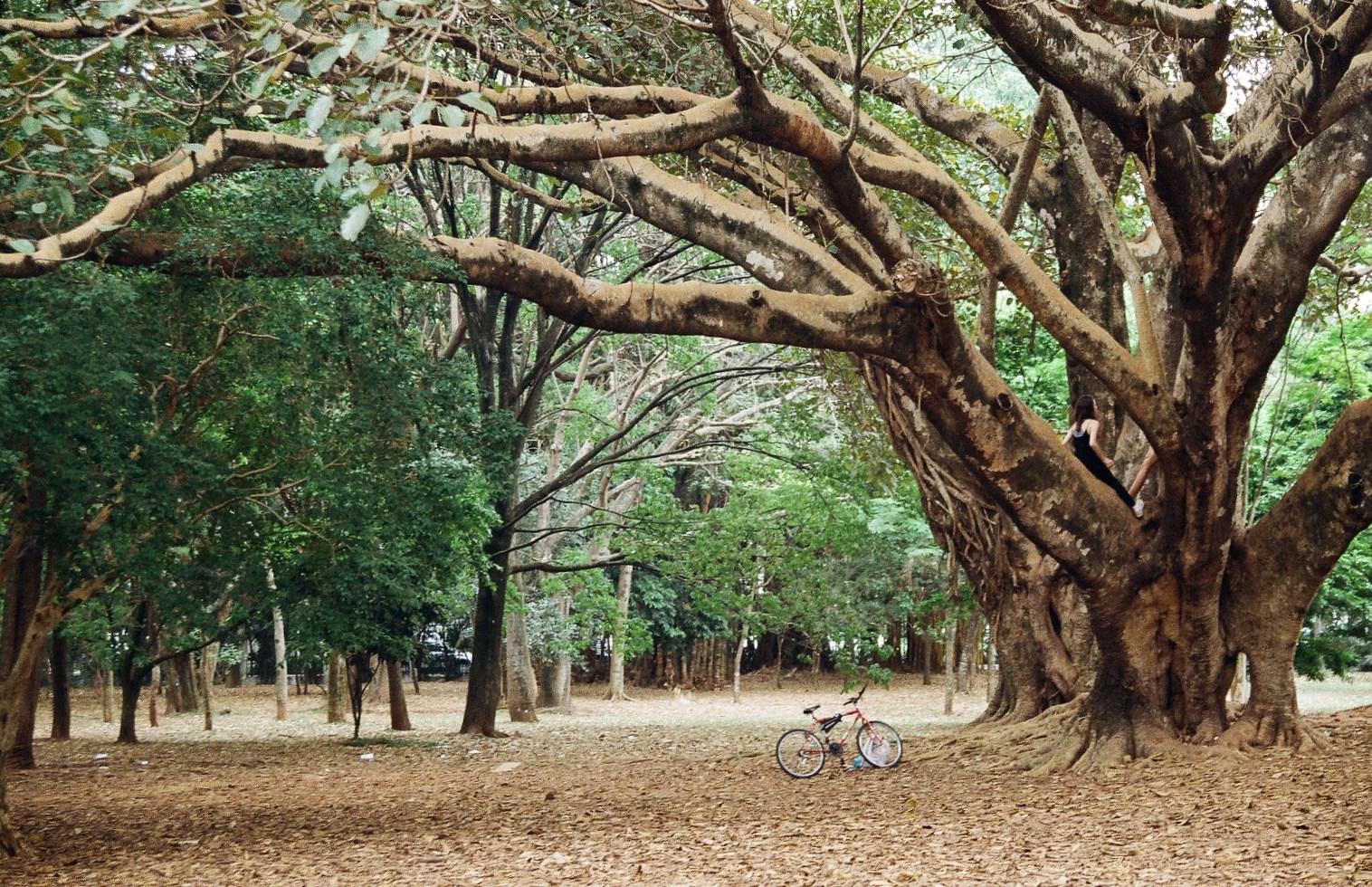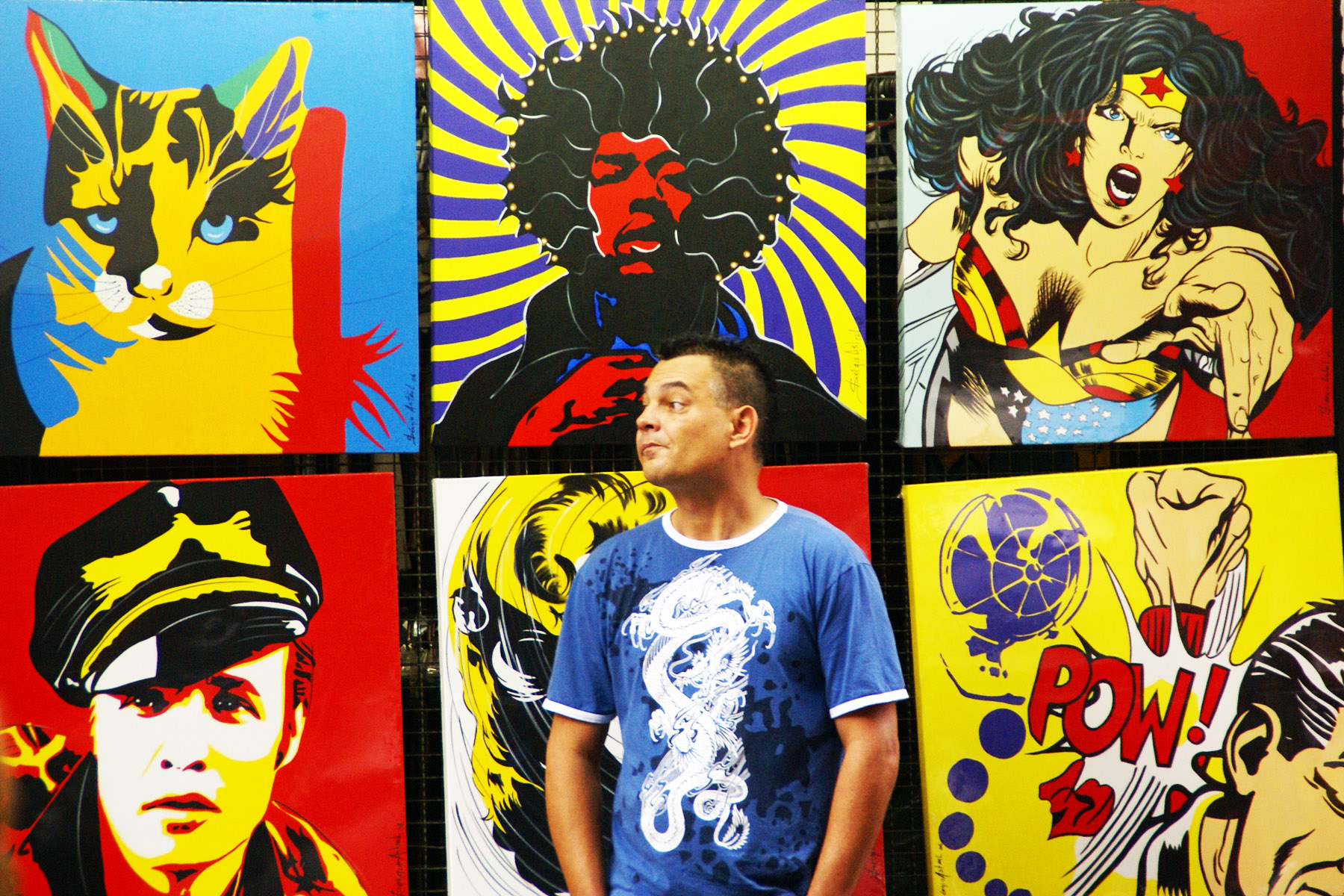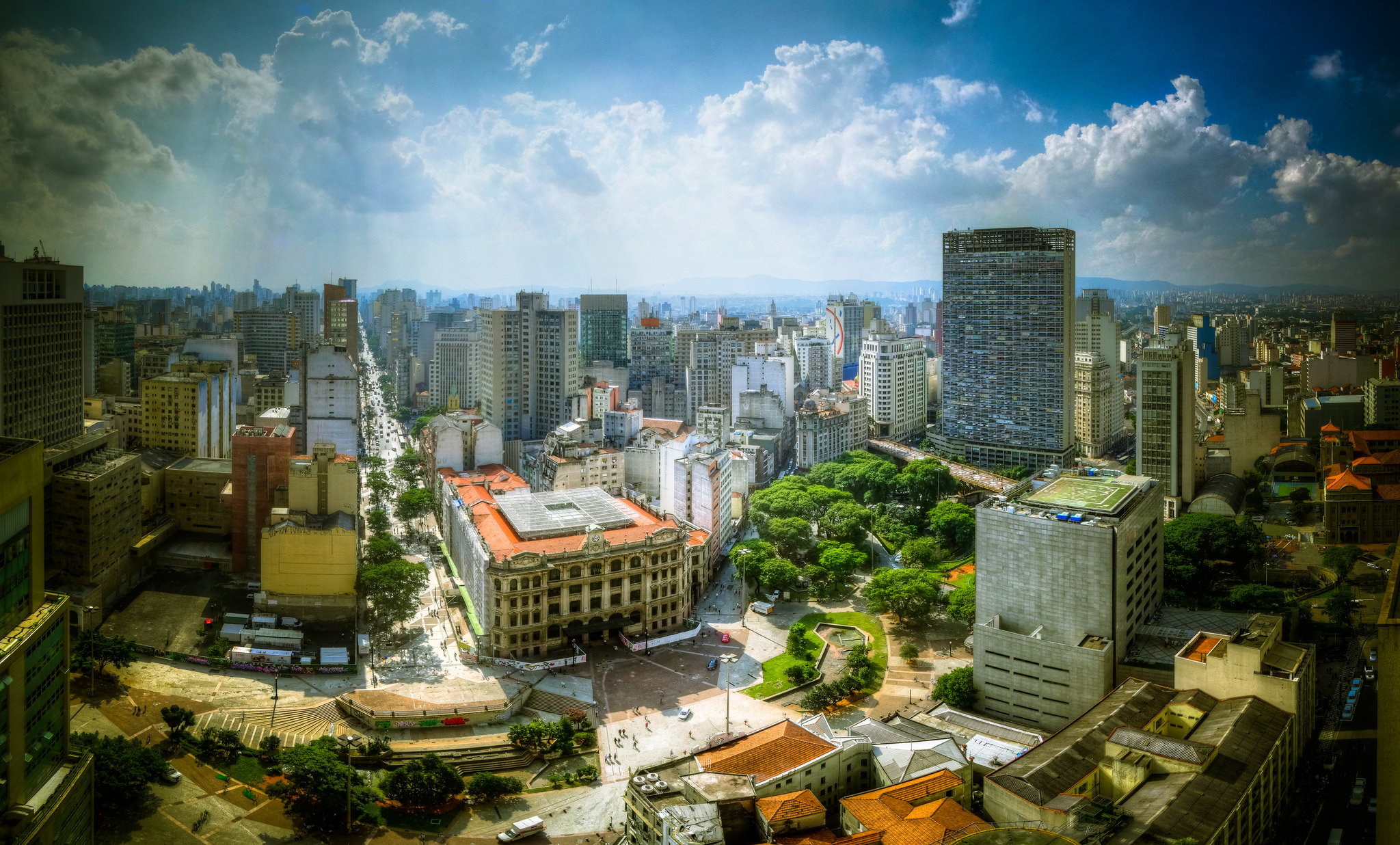Sao Paulo: beautiful land of the drizzle
Sao Paulo is one surprising contrast after another. The trashy downtown gives way to dignified but faded glory in the old town centre. The city is home to staid hedge-fund managers and sassy hipster chefs. It is as much Brazil as London is England and Paris is France.
Sao Paulo is becoming a centre for art, music, dance and sport. It has become the destination for trendy young designers adding a high-fashion gloss to urban landscape of bland accountants and bankers. It is the city where Brazil’s national cocktail, the caipirinha, is mixed with sake rather than cane spirit, thanks to its large Japanese community.
Known to locals as Sampa or, for the weather, Terra da Garoa (land of drizzle). Sao Paulo shares the irresistible light-hearted theatricality of Rio. But Paulistanos are more likely to wear business suits than bathing suits.

A panoramic view of Sao Paulo gives a small sense of the city’s massive size. (Image: Santana, CC BY-NC-ND 2.0, via Flickr)
With an urban citizenry of 12-million and a total 21-million within the wider metro, it is the most populous city in Brazil, in the Americas, and in the entire southern hemisphere. Sao Paulo is the definition of a megalopolis. Home to Brazil’s banks and corporations, it is the capital of a Brazilian state, with an economy the size of Argentina’s.
It’s a city always at work, always in a rush. With so many people, the traffic is always insane. But the tough concrete landscape is relieved by green spaces like Ibirapuera urban park, where the people go to relax and spend time with their family.

A place of green tranquillity in the middle of the city, Parque Ibirapuera is to Sao Paulo what Central Park is to New York. (Image: Lu, CC BY-NC 2.0, via Flickr)
Once the work is done, Sao Paulo is a city designed for people to saunter around, to enjoy a drink and good meal outside. It is a city where you can eye architecture and immerse yourself in culture. It is a city made more for the pleasure of its citizens than tourists.
Sao Paulo is a place where the graffiti murals on the city streets are as noteworthy as the art in the museums, and the Morumbi food hall has its wares, everything from fresh fish to baby pigs and hot peppers, displayed like art installations.

Sao Paulo’s energised counterculture means the city’s best art is produced on the street, not in the studio. Left: Rua Alves Ribeiro, Cambuci. Middle: Avenida General Olimpio da Silveira, Santa Cecelia. Right: Praca Giuseppe Cesari, Mooca. (Images: Augusto Gomes, CC BY-NC 2.0, via Flickr)
Of course there is a museum dedicated to Brazil’s love affair with football. Over three floors, the Museo de Futbol explains exactly what the beautiful game means to Brazilians.
The city has its fair of posh shopping destinations but its everyday markets cater to individual tastes and budgets. The Liberdade street market is a cornucopia of handmade crafts and puppets, and home-dyed silk scarves. The Saturday market at Praca Benedito Calixto is the market to visit for art, antiques, souvenirs and street food.

Pop art for sale at the Praca Benedito Calixto Saturday market. (Image: Jairo,CC BY 2.0, via Flickr)
The Museum of Art of Sao Paulo and its collection of works by Renoir, Cezanne, Manet, Degas and Modigliani is free of tourists and their cameras. A meal at one of the many sidewalk cafes in the upmarket district of Jardins, gardens in Portuguese, is likely to be in a restored house, the food what the chef would serve were he cooking for friends at home.
Join the city for a traditional Brazilian Sunday lunch at A Figueira Rubaiyat, a restaurant built around a giant 150-year-old ficus tree in Jardins. Snack on oysters and wolf down succulent picanhas steak or bountiful Amazon River fish while luxuriating with the warm sun on your bare arms.

A late afternoon at the Espaco Quixada bar and restaurant in the Vila Buarque district of Sao Paulo. (Image: Marcelo Druck, CC BY-NC-ND 2.0, via Flickr)
Paulistanos are Brazilian, so they live life lavishly. Sao Paulo lets you experience, undiluted, life in the biggest city of Brazil.
Sao Paulo fast facts:
Country: Brazil
Region: Southeast
State: Sao Paulo
Founded: 25 January 1554
Language: Portuguese
Currency: Brazilian real (BRL)
Area: 1 221 km2 (municipality), 7 944 km2 (metro)
Elevation: 760 metres above sea level
Population: 21.1-million
Naming convention for its people: Paulistanono
Time zone: UTC-3 (winter), UTC-2 (summer)
Telephone area code: (+55) 11

From the small Portuguese village of Sao Paulo dos Campos de Piratininga founded by 12 Jesuit missionary priests in 1554, the city of Sao Paulo has exploded into the greatest urban centre in the southern hemisphere. (Image:Babak Fakhamzadeh, CC BY-NC 2.0, via Flickr)


